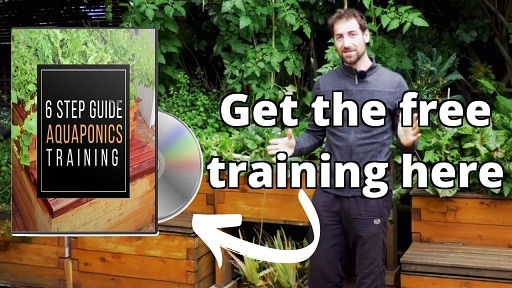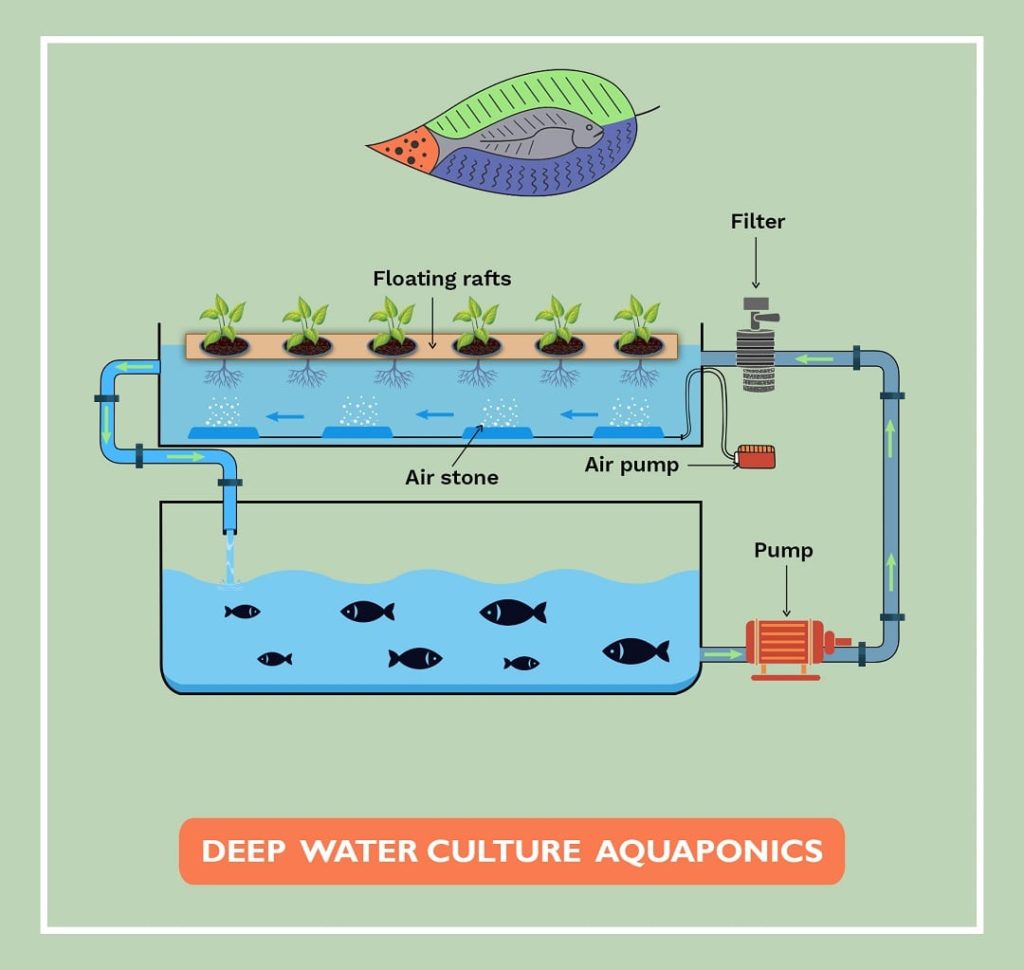In this article you will learn what aquaponics is and how you can produce sustainable fish and vegetables at home.
Here is what you are about to learn:
- What is aquaponics and how it works
- The different aquaponics techniques
- What quantity of food can aquaponics produce
- Challenges and general maintenance
- Consumables and material needed
- The guide to success
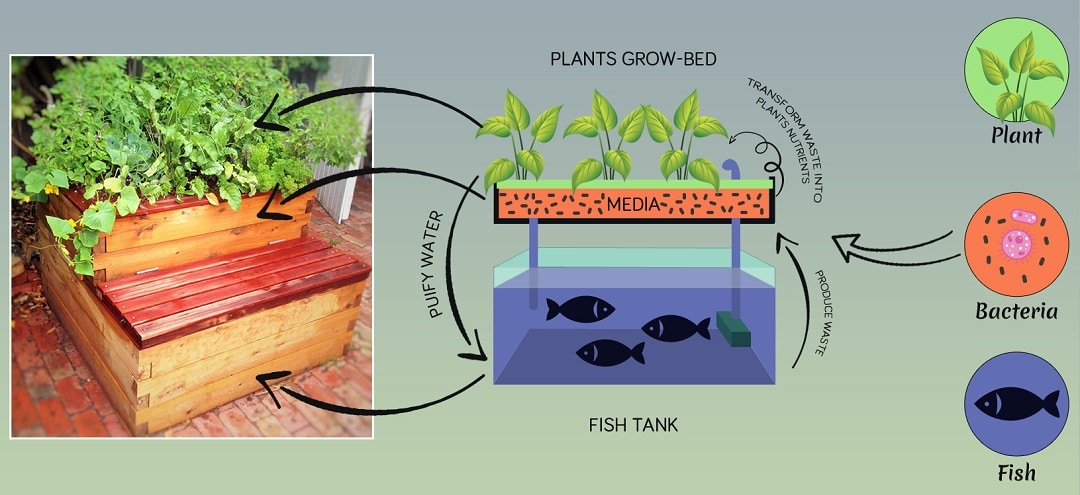
Aquaponics definition
Most people see aquaponics as the combination of the 2 agricultural techniques below:
–Aquaculture consists of growing aquatic creatures.
–Hydroponics is the technique of growing plants without soil (using nutritive liquids).
The word aquaponics comes from the contraction of those 2 words. “Aqua” from aquaculture and “ponics” from hydroponics. If the above seems to be a simple and easy way to define aquaponics, we will see that aquaponics is much more. You are about to learn why aquaponics is so sustainable and efficient…
Paradigm shift
Aquaponics is using natural cycles completely ignored by most current agricultural practices. In order to explain this paradigm shift, we need to study the 2 production systems listed above. Like the majority of the current agriculture, they are 2 “mono-culture” techniques. Mono-culture means that only one type of crop is growing.
For the mono-culture farmer, all other forms of life are pest or competition. Thus, he spends a considerable quantity of time, energy and money to spread pesticides. The aim is to kill all other sources of life in the culture. If you are like me, your values probably don’t align with the above… You will be cheerful reading the following paragraph about aquaponics which came to me like a liberation.
Aquaponics is the liberation
As explained above, aquaponics is more than combining 2 mono-culture systems. It is actually working with an ecosystem. In aquaponics we grow fish, plants and bacteria all together in a closed water loop. other sources of life are not seen as pest or competition but as good biodiversity. As I often say: “Aquaponics is the art to work with nature“.
How aquaponics works

Fish are living in a fish tank. when we feed the fish, they digest the food and reject organic waste into the water. A water pump pushes the fish waste into a grow-bed full of bacteria. The bacteria are not only consuming the fish waste but also reject plant nutrients. Plants are growing on this grow bed and consume the nutrients. They produce vegetables and a clean water is returning to the fish tank.
This loop grows sustainable, healthy and tasty fish and vegetables in one ecosystem. Now let me explain you how we (as humans) came to this cycle. If things remain confused in your head, it will become clearer…
Aquaponics is revisiting natural cycles
If the above may seem complicated at a first glance, it actually makes much more sense when you observe mother nature. And what’s better to represent nature than a forest? So let’s have a close look at how a forest is working: There are trees, plants, all sorts of animals, insects, fungus… All living together. In a forest you rarely see sick animals or plants. Everything seems to be in place and to work in “Harmony“. In fact, the diversity of living creature makes the ecosystem stronger.
When a plant dies, or an animal poop, some animals are consuming it. They transform it into small organic particles. Those are then transformed by fungus and bacteria in nutrients. Then, those nutrients are available for the other plants. This cycle is the “nitrogen cycle‘ also known as the “Cycle of life“. It totally makes sense to use this cycle in agriculture. It’s ecofriendly and sustainable. All natural ecosystems work on this principle and as we are going to see, humans have been using it for thousand of years…
History of aquaponics
Before the use of chemistry and fertilizers, humans were producing their food following natural cycles. They were sometimes growing different species of crop together (multi-specific agriculture). Today we would call those practices permaculture.
To be more specific, here is how aquaponics probably started (the following takes place in Asia thousands of years ago):
A farmer is growing rice in shallow waters (in what we would call a paddy field). Some insects attack his crop. He has the idea to add some fish into the pond (catfish or tilapia). The fish eat the insects and reject waste into the water. The bacteria present in the soil transform the waste into nutrients.
As a result, the farmer harvests a larger rice crop plus a fish crop. This was the beginning of aquaponics. Other cultures were using similar techniques. Aztec were growing plants on islands (called chinampas ) floating on fishy lakes.
The famous Babylon gardens were growing fish in the irrigation channels. Hence they were increasing the nutritive value of the water.
Transition to modern aquaponics
This is during the last 40 years that aquaponics took a new face. At his origin, aquaponics was mainly “extensive”. Fish were grown at very low density with natural occurring food. Then pioneers tried to apply this technique to more “controlled environments“. They were inspired by the progress of the recirculated water systems in aquaculture.
They achieved to hold the ecosystem in relatively small tanks with recirculated water. They also achieved to actively feed the fish to increase the quantity of fish per volume of water. The New Alchemy Institute founded by John Todd made considerable progress between 1970 and 1990. Then several doctors and fish farmers worked on different systems with various results.
Finally since 2000 the communication improvement (internet) gave the hobbyist the opportunity to play a massive role. They transformed aquaponics to achieve what it is today.
In other words, the current aquaponics systems allow us to welcome an ecosystem to a small scale human made support (the setup). Now let’s see how we can put this in practice…
Different types of aquaponics
We went through the aquaponics principle. In practice we can apply aquaponics through the 4 techniques below:
Deep Water Culture (DWC)
Water flow:
A fish tank supplies water to a serie of mechanical and biological filters. then, the water enters into a “Deep Water Culture” tank. The DWC tank consist of plants growing on rafts floating on top of a tank (generally more than 30 cm deep). In the bottom of the DWC tank some air stones supply a constant flow of air. It allows the plant roots as well as the bacteria living on it to breath. Then, the purified water goes back to the fish tank.
Advantages of the DWC
This type of system is very well adapted to large scale aquaponics. It allows to easily harvest the crop and to add new rafts at needs. The crop is cleaner as it’s not in direct contact with media (such as in a flood and drain grow-bed system). The productivity can be significant. You can design very long systems covering a large surface.
Disadvantages of the DWC
The DWC systems require a good filtration (mechanical and biological).
I don’t recommend this type of aquaponics for beginners. It can be difficult to supply the correct quantity of air in the water.
They also need a large space to be efficient and are not adapted to small backyards.
Pest control can be challenging. Floating rafts don’t allow the same biodiversity as a flood and drain aquaponics system.
Best use
Large scale / commercial aquaponics
Nutrient Film Technique (NFT)
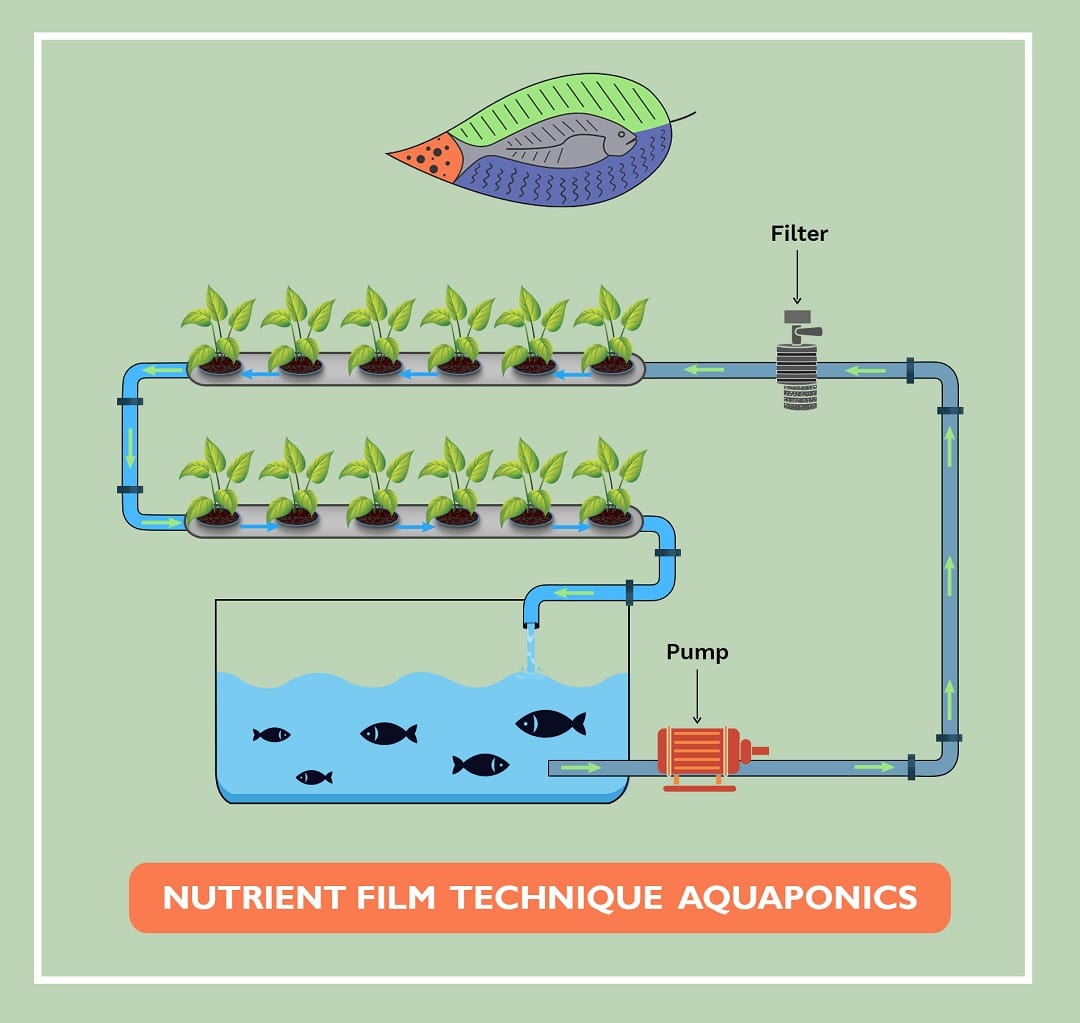
Water flow
The water from a fish tank goes through a mechanical and biological filtration. After that it falls into a series of gutters or pipes angled with a slight slop. Those pipes have holes on the top and plant pots grow into those holes. The water level is just reaching the bottom of the plant pots (sometimes not even).
The water is flowing on the bottom of the pipe forming a “film”. The water brings the nutrients necessary to the plant and form a film on the bottom of the pipe. Hence, it’s called “Nutrient Film Technique“.
Advantages of NFT
NFT allows to produce a large quantity of food on a limited surface. It is possible to place several pipes on a pyramid type of shape.
Another option is to position NFT pipes on a wall and optimize space.
Disadvantage of NFT
This technique requires a separate mechanical and biological filtration.
The temperature can be difficult to regulate into the pipes. Indeed, the quantity of water into the pipes is low. As a result, the temperature fluctuates with the sun exposition. for this reason, if you are in a warm country I recommend to chose white pipes over black.
Best use:
Large scale aquaponics or hybrid system for a small scale aquaponics along an exposed wall.
Vertical aquaponics
This technique is similar to NFT although the water falls vertically. There are two common vertical aquaponics techniques:
Tower aquaponics
Here the water is falling through a vertical pipe. The aquaponics grower places plant pots through the pipe. When the water falls it wets the plant pots and bring all necessary nutrients.
Advantages of tower aquaponics
This system allows to grow food vertically and produces a high quantity of food per surface. It is therefore more adapted to capital cities
Disadvantage of tower aquaponics
It requires to raise the water which is costly in energy. it is therefore one of the less sustainable forms of aquaponics.
Best use:
Cities where access to the land is limited and expensive.
Vertical walls
Here the filtered water from the fish tank falls through felt fabric attached to a wall or through series of pots one underneath the other. The felt fabric has pocket shapes with plants growing inside.
Advantages of aquaponics vertical walls
They look very nice and can be used in a private backyard.
They allow to grow plants or vegetables on a wall.
Disadvantages of vertical walls
They need a considerable maintenance
They are costly
Like other vertical walls they require to raise the water. Hence they consume a considerable quantity of energy. As a result they are not as sustainable as other types of aquaponics.
Best use
Ornamental green walls
Flood and drain aquaponics

I kept this one for the end as this is the type of system that I prefer! The flood and drain aquaponics consist of minimum 2 tanks. A fish tank at the base and a grow-bed on top. The fish tank water (charged in fish waste) goes through a water pump and arrives to the grow-bed. The grow-bed is actually a “flood and drain grow-bed“.
Yes, it flows and drain several time per hour. Every time it drains, the purified water fall back into the fish tank. You may wonder why we have a flood and drain system instead of a continuous water level? Well, let me explain:
Flood and drain system vs continuous water level
Our flood and drain grow-bed is full of media. As media we generally use a volcanic rock such as scoria or expanded clay balls. This media has two purposes:
-It’s a support for the plant roots.
-It’s a support for the bacteria responsible for transforming the fish wast into plant nutrients.
Both of those bacteria and plant roots require oxygen to breath. The best way to ensure a constant supply of air in the whole depth of the grow-bed is to empty and fill it several times per hour. This is why we have this flood and drain system in place.
Now you may wonder how do we achieve the flood and drain in our grow-bed? I will explain this to you a bit further down… For now let’s focus on the pros and cons of a flood and drain aquaponics system.
Advantages of a flood and drain aquaponics:
It is the aquaponics system that represents the best a natural ecosystem. After few months, a whole ecosystem is in place and the media looks very much like a soil.
It is well adapted to small backyards
It can contain a filtration and sump tanks but it also allows the simplest design. So you can start with a very low budget.
It is the easiest type of aquaponics to begin with.
Disadvantages of a flood and drain aquaponics
It requires to unclog the media every few years.
Best use
Well adapted to backyard aquaponics. It’s also by far the best type of aquaponics system to begin with.
Bell siphon, the magic of a flood and drain aquaponics
I made a promise and I will keep it. It’s now time to explain you how we achieve a flood and drain movement in our grow-bed… This article about “what is aquaponics” is probably not the best place to give technical data. Yet, I will give you an overview of the principle. So the flood and drain grow-bed is a simple tank full of media but we add a “bell siphon” to it.
The bell siphon has for role to empty the whole grow-bed of water when the water level reach a specific height. Once the Grow-bed empty, the bell siphon stops and, as the water pump is still on, the water raises again. The beauty of the bell siphon is that it doesn’t consume energy. It’s only powered by gravity.
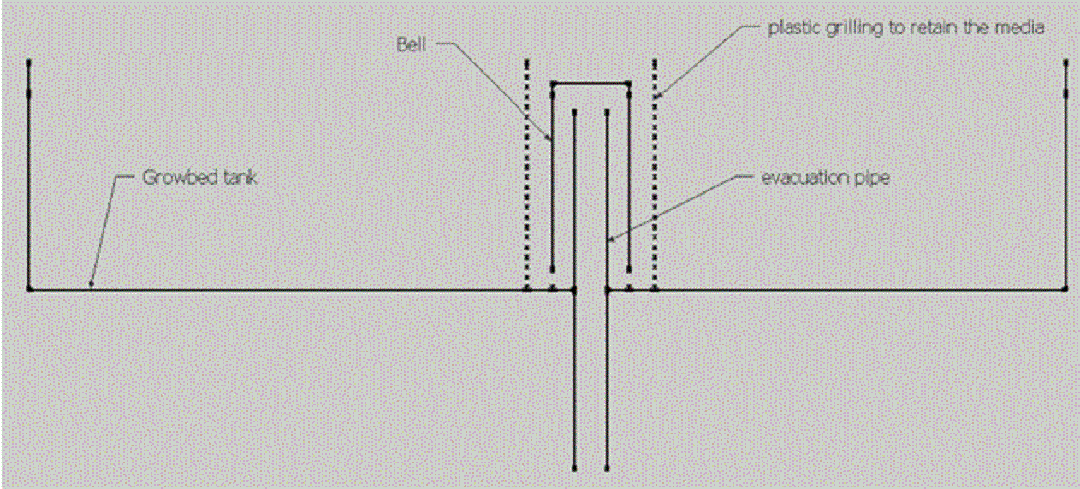
Growing food from fish poop is safe!
After reading this article you may wonder if aquaponics is safe. We sometimes hear about people falling sick because of poorly washed vegetables. Those vegetables are sometimes grown with animal waste fertilizer so how is aquaponics different?
Yes, it is true that some bacteria living in animals digestive systems can be dangerous for human. This is the case with chicken, pork, beef, lamb… They can carry E.coli which can cause severe illness and even death if consumed. But there is a massive difference between those animals and fish. Do you know what it is? I leave you a 5 second to find out…
OK, the difference it that those terrestrial animals are “warm blood animals”. Yes, chicken, pork, beef, lamb are all warm blood animals such as human. Fish instead are cold blood animals.
Hence, they don’t contain any bacteria that has the ability to arm humans. As a result, the food grown in aquaponics is completely safe. In fact, from a food safety perspective, if you grow your aquaponics indoor you don’t even have to wash your crop.
What you can grow in aquaponics
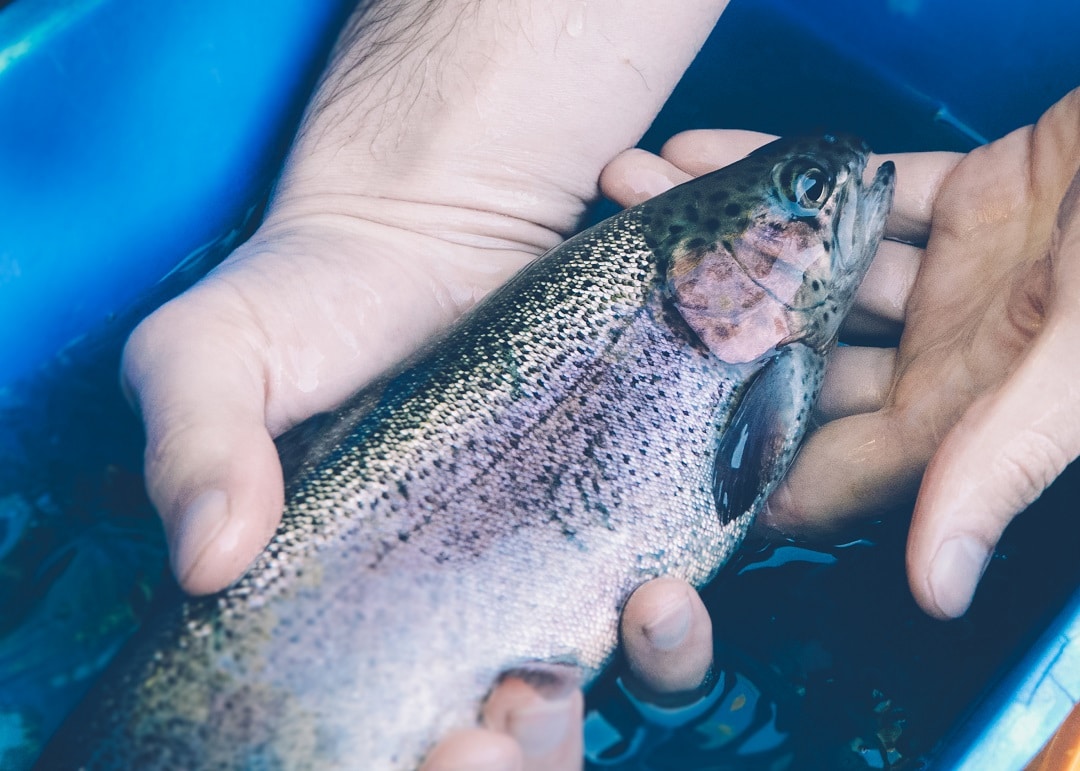
Aquaponics allows to grow fish and vegetables. However, the area and climate where you live will determine the type of fish and plants that you can grow.
Fish
There is a wide range of freshwater fish possible. If you live in a warm country you may want to chose among the following famous tropical fish: Tilapia, barramundi, freshwater prawns, catfish, basa.
If you live in a colder country you have the possibility to grow: Trout, gold fish, koi fish, silver perch, murray cod.
All of them have different growth rate. If you begin in aquaponics you will do yourself a favor by selecting a hardy fish. Tilapia, silver perch or carp are good beginners choice.
Vegetables
Most plants do very well in aquaponics. Some of them can even grow so well that they become unmanageable. Among them we have the mint, the watercress, turmeric…
However, some plants have more specific requirements and will not give good results in aquaponics. Stay away from cactus and succulent plants. Indeed, they don’t do well in a moist environment. Plants requiring a very high or very low pH will also struggle in a classic aquaponics system.
What quantity of food can aquaponics produce
Every aquaponics system is different so the classic response is:”it depends”. But in this article I will give you an average estimation. Two square meters of aquaponics system (flood and drain aquaponics) can produce 6 kg of fish and 40 kg of plants every year. Again, it depends on many factors such as sun exposition, temperature, species, feeding…
Aquaponics challenges
You may think: “aquaponics seem interesting but it must be too complicated”. Let me tell you that you are wrong. Aquaponics has challenges but with the correct advice anyone can succeed. Here are the most common challenges encountered by aquaponics beginners:
Water parameters
Water parameters such as pH, ammonia, nitrite and nitrate are critical. But, in a well designed and managed aquaponics system, those values remain in a good range. Many aquaponics growers don’t focus on those. However, I recommend all beginners to measure those parameters. A weekly water test will avoid you bad surprises. Testing the water with an aquarium test kit is fairly simple and doesn’t require any specific skill.
Pest control
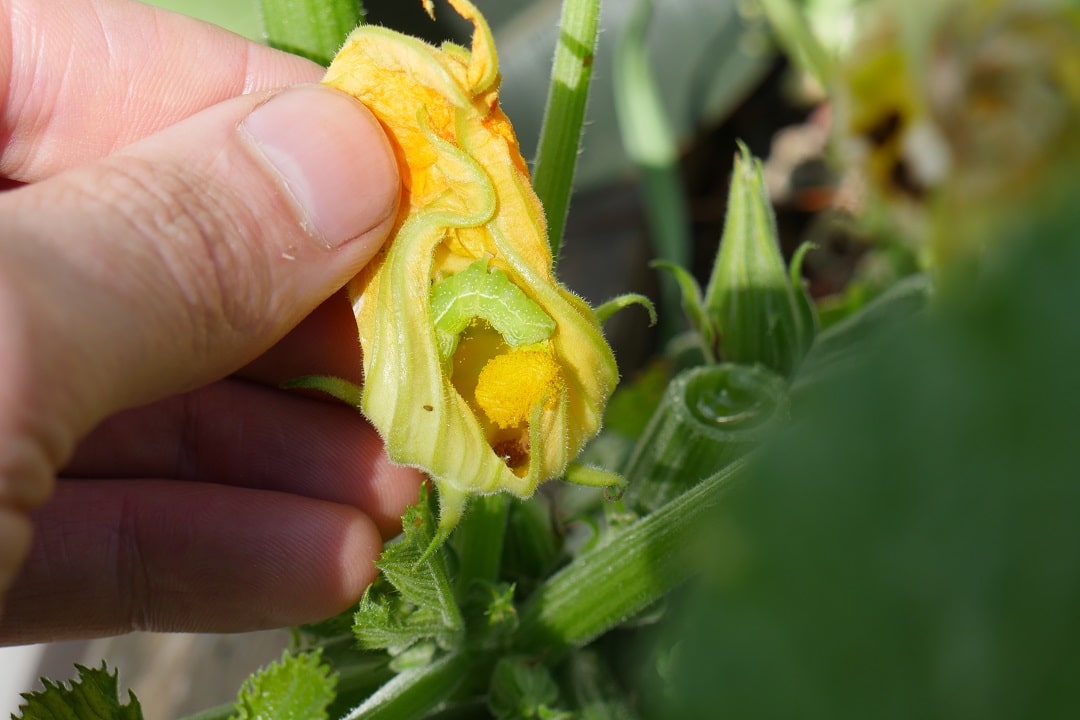
In aquaponics pest management can be challenging. The approach must be completely revised from the classic gardener who use pesticides. We are working with a whole ecosystem so we can’t spread pesticides or it would affect our fish and bacteria. In aquaponics we must take advantage of the natural balances to solve this challenge.
Biodiversity is key! This topic is vast and I can’t develop it here. However, I will not let you down. I created a full article on this specific topic to make sure you do the right thing. Read the full article about aquaponics pest control here.
Mineral elements
Many aquaponics enthusiast start aquaponics with good results for few months. But after a while, the plants productivity decrease and some plant leaves turn yellow. Too often they don’t understand, are unable to grow any new plant and stop aquaponics. It is a big shame because there is one good reason for that and we can easily fix it…
In a classic garden, worms are digging into the soil and raise minerals from the deep. In aquaponics we don’t have this possibility as we are in a “semi closed ecosystem“. The recycled fish waste offers Nitrate, phosphorous and potassium to our plants. They are the most important nutrients for plants growth.
However, the plants need a multitude of mineral elements in extremely small quantities. Several mineral elements are essential to allow the plants expressing their best potential. Hence we sometimes add some natural rock dust or essential mineral powder to the water.
General maintenance
Aquaponics requires a very little maintenance. It’s actually the easiest way to grow food at home. You don’t need to water your plants or weed like in a classic garden. The philosophy here is to let nature do the work for you. The work of the aquaponics grower is simply to keep good conditions to the whole ecosystem. Here below is a table of the general maintenance of an aquaponics system.
Number of fish needed
Few fish are needed to run an aquaponics system and fulfill the plants need. However, there is a limit into the maximum quantity of fish that you can stock in an aquaponics system. One mistake is to add more fish in your fish tank than your aquaponics system can hold. Again, this limit is variable and affected by a multitude of parameters. It includes the size of the grow-bed, the media quality, the species of fish…
owever, I like to give a maximum limit to not go over. this limit is 1 kg of fish per 50 litres of grow-bed. Yes, this is critical. There are a number of ratio to respect in aquaponics all available within the free 6 step training.
Water access
An aquaponics system requires 10 times less water than a classic garden. However, there is some evaporation and water consumption by the plants. Hence, we sometimes have top up the system with freshwater. The best water for aquaponics are rain water and well water. They are free and without chemicals.
However, if you don’t have access to those, this is not an issue. you can use tap water as long as you only top up your system with no more than 10% of the total water volume at once.
Where to position the aquaponics system
Aquaponics systems are often outdoor. In this case, the climate has an impact on the productivity of the whole ecosystem. Here are a few recommendations:
Study the sun exposition
Plants need light to produce energy thanks to photosynthesis. I recommend to select a sun exposed area. Make sure to equip your fish tank with a sun cover to avoid an unmanageable algae growth.
Avoid wind
Wind can have several impacts on your plants:
-It reduces the temperature
-Strong wind can break plants and affect the whole crop
Wind increase plants evaporation and therefore increase the water consumption.
Rain
A little bit of rain is not a problem for your aquaponics system. If anything, it will slightly decrease the nitrogen concentration. It is often a good thing.
The optimal position
Greenhouse
If you have the budget, a greenhouse will be a great investment. It will significantly increase the productivity of your aquaponics system. In a greenhouse the temperatures are more stable and there is no wind. The growth season is therefore longer.
Indoor aquaponics
Having an aquaponics system indoor is a possibility. It has the advantage to allow a good environment control. Unfortunately it is generally not as sustainable as an outdoor setup. Indeed, it requires an artificial light system which consumes energy.
Can aquaponics be organic…
From a factual point of view, the food we produce in aquaponics is very sustainable and healthy. We don’t use any pesticide and follow natural cycles. However, the organic standard “generally” requests the plants to be grown in soil.
I say “generally” because each country has his own standard. In aquaponics we are growing plants on a media. Even if a huge biodiversity of animals are living in this media, some see a difference to a “soil”. For this reason, some countries will qualify aquaponics “organic” and others will not.
The material needed to start aquaponics
If you read this article until here, you may well be keen to try aquaponics by yourself. Here below is a list of the material that you will need to build a simple flood and drain aquaponics system:
- Two tanks (one for the fish tank and one for the grow-bed).
The tanks can be of second use but you must make sure that they are “food grade“. Food grade means that no nasty chemical was inside the tank before. They must also be strong with a good structure. For this simple flood and drain aquaponics we will place the grow-bed on top of the fish tank. So please make sure that the grow bed is robust enough or you will need a stand. The fish tank must be approximately twice the size of the grow-bed. - Water pump
This one must have a water-flow allowing to move twice the volume of the grow-bed per hour at least. - Bell siphon
This one must be adapted to the water pump water flow. You will be able to build it yourself following my recommendation or to order one online. - Air pump
This one is optional but for the comfort of your fish I recommend to add an air-pump to aerate your fish tank.
Aquaponics consumables
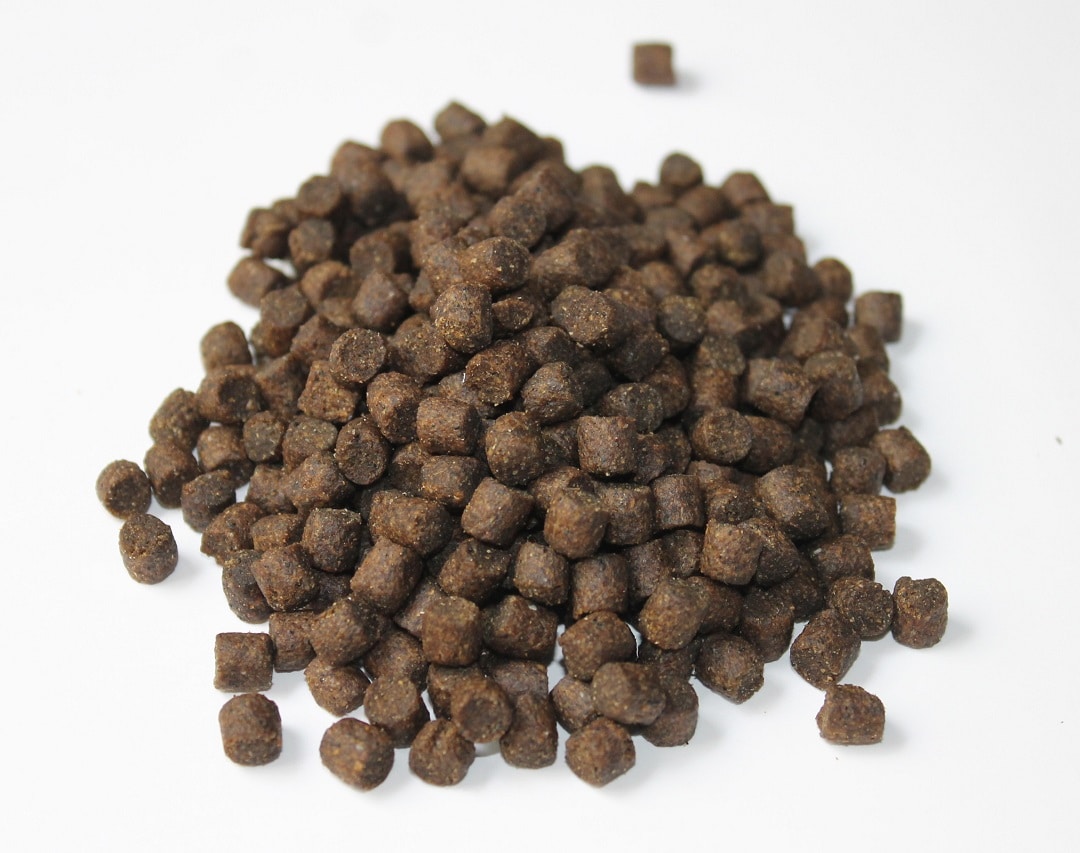
If you run an aquaponics system you will need the following:
Fish food
The fish food we use in aquaponics is very important. Indeed, this is the source of food for the whole ecosystem. It is possible to produce your own fish food. However, most of us use aquaculture fish food because it is very convenient. It comes into the shape of little dry pellets and we can keep it for months. The fish food vary in size and float-ability depending on your fish size and behavior.
The price goes from $1.5 to $8 USD/kg. It may seem a lot but trout for instance need less than 1 kg of food to produce 1 kg of fish. This is because the fish food we buy is dry while the fish is approximately 80% moisture.
Mineral powders
Once in a while you may have to add some minerals to the aquaponics system. The quantity needed is very small. 1 kg of mineral powder will last you for years in a classic backyard aquaponics. It will cost you around $10 USD/kg
Water test kit
Water test kits are great investment. You can get one from any good aquarium shop for approximately $30 USD and it will last you for years.
The opportunity…
If you have an interest to grow your own food without effort, Aquaponics is the technique I recommend. It has many advantages, here are a few:
- It is sustainable as it uses natural cycles and doesn’t generate waste
- Unlike an aquarium or a classic garden, aquaponics is not a commitment. You can go on holiday for several weeks. Your aquaponics ecosystem will be fine without human care.
- You produce healthy food without pesticides
- Be proud to feed your family with home grown food
- It consumes 10 times less water than a classic garden
- Bring nature to your backyard. An aquaponics system attracts life and you will have the opportunity to see insects and birds all year long.
- It’s a water feature and can also be a real furniture. The Ecoflex aquaponics systems are benches. I have also designed custom aquaponics in the shape of a table.
- You can also design your aquaponics system to be ornamental and display nice pond fish.
Your guide to success
I know that it may be scary to start a new food production including live fish when you have no experience. There are ratio and limits to respect in aquaponics to design a workable and efficient system. Any mistake may cost the life of your fish.
Hence, I designed an aquaponics training to help people like you do their first steps. I called it the “6 step training” because I break the learning in 6 easy steps. My aim is to help you and the rest of humanity to grow your own food in a sustainable way. Hence, I offer it for free. Please share it with your beloved ones. The ones who care about the planet and the quality of food they are feeding their family with. Click here to access for free! Thanks and good reading 🙂
